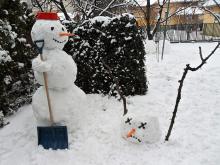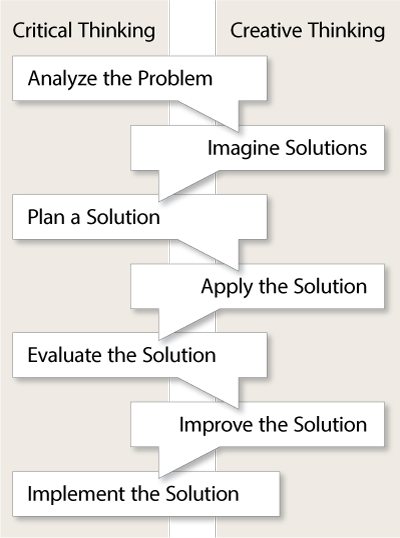
Calvin's twisted take on traditional snowpeople shows his creative thinking.
(Image courtesy of Vegas Bleeds Neon via Wikimedia Commons.)
When I write the first draft of a novel, I'm Calvin from the classic comic series Calvin and Hobbes. Brimming with imagination and life, I don't care what may be sensible, realistic, and conventional. I'm full of passion, flying in many different directions. Sure, there'll be plenty of mistakes, but at least they'll be big.
When I revise and edit a novel, I'm Calvin's parents. I have to look dispassionately and critically at what the child mind has created. I have to analyze and evaluate. Patience, persistence, and a kind of longsuffering skepticism must prevail.
To put it another way, the parents' job is to make the child's life safe, and the child's job is to make the parents' life dangerous.
Calvin and Creative Thinking
Creative thinking is very much like Calvin: passionate, prodigious, fearless, and foolish. It comes up with a multitude of ideas, some of which are complete garbage and some of which are complete brilliance. Creative thinking looks for novelty, possibility, wonder, and profundity. To write the first draft of a 100,000-word novel, you must engage the part of the brain that produces words and ideas in volume. Calvin can have a thousand adventures on a single afternoon, but his parents only ever have adventures (reluctantly) when he drags them into his world.
Calvin's Parents and Critical Thinking
Critical thinking is very much like Calvin's parents: dispassionate, analytical, persistent, and wise. It looks closely at ideas and sorts out which are worth keeping and which should be discarded. It brings rationality and reasoning into the process so that, in the end, what is created will work. To turn a 100,000-word first draft into a novel worth reading requires this kind of careful thinking. Not everything that Calvin produces is worth keeping, though his imagination is the beating heart of the story.
Creative and Critical Thinking: A Partnership
Creative thinking produces in huge quantities. Critical thinking sorts and judges. To get anywhere as a writer, you have to engage both types of thinking at different times in the process. What is true for writers is true for anyone. Problem solving is a process of shifting back and forth from critical to creative thinking:
Problem-Solving Process

Critical and creative thinking are two pistons in the engine of problem solving. This engine drives the writing process, as we've seen above, as well as the engineering-design process, the scientific method, research, inquiry, and all other human endeavors that require synthesizing, analyzing, and evaluating.